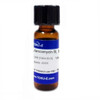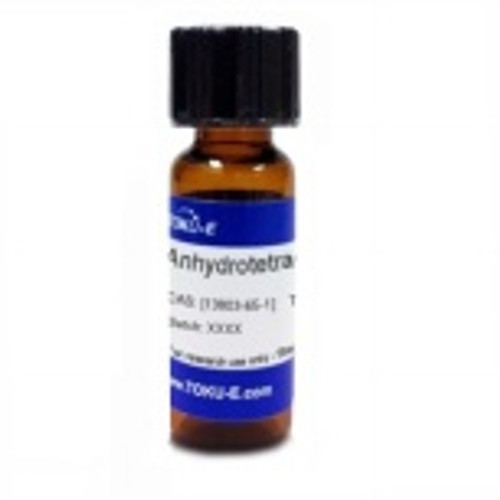Vancomycin B Hydrochloride, EvoPure is a glycopeptide antibiotic derived from Streptomyces orientalis that was discovered in 1953 from a soil sample found in Borneo. It is effective against gram-positive bacteria such as Staphylococcus aureus, including MRSA. Vancomycin HCl is commonly used in selective media for isolation of gram-negative bacteria as well as studies of nanoparticle transport and antibiotic resistance.
EvoPure products are purified single antibiotic fractions, most are >99% pure. These products can be used to identify or analyze the specifc effects of individual fractions.
Click here for more Vancomycin products.
| Mechanism of Action |
Vancomycin B HCl prevents cell wall synthesis by two separate mechanisms. One mechanism prevents N-acetylmuramic acid (NAM) and N-acetylglucosamine (NAG) peptides from linking together forming the peptidoglycan backbone through the incorporation of the Vancomycin B HCl molecule to the D-alanyl-D-alanine terminal. The second mechanism prevents crosslinking between amino acid residues in the peptidoglycan chain altering bacterial cell membrane permeability as well as RNA synthesis. |
| Spectrum |
Vancomycin HCl inhibits growth of many Gram-positive bacteria including the antibiotic resistant superbug, MRSA (Methicillin resistant Staphylococcus aureus). Vancomycin HCl is effective for treating MRSA infections because it inhibits cell wall synthesis through a different mechanism than β-lactam antibiotics. Gram-positive bacteria have emerged that are resistant to Vancomycin HCl, such as Vancomycin HCl resistant Staphylococcus aureus (VRSA) and Vancomycin HCl-resistant enterococci (VRE). |
| Microbiology Applications |
Vancomycin B HCl inhibits the growth of most Gram-positive bacteria including the MRSA. It is usually only indicated for the treatment of serious or life-threatening bacterial infections like those caused by β-lactam-resistant staphylococci bacterial infections. There are now Vancomycin HCl resistant bacteria, primarily, Vancomycin HCl resistant staph aureus (VRSA), and Vancomycin HCl resistant enterococci (VRE).
Media SupplementsVancomycin can be used as a selective agent in Columbia Blood Agar, a selective media for Campylobacter species. |
| Plant Biology Applications |
Vancomycin HCl has low toxicity to plant cells and is often used in Agrobacterium tumefaciens mediated transformations as a method to control its growth in plant cell culture media. Vancomycin HCl is also suitable for bacterial contamination control in plant cell culture media and is sometimes used in combination with cefotaxime due to greater synergistic effects. Most studies do not describe any negative effects to the plant by using Vancomycin HCl, however, in a study done by Silva and Fukai (2001), lower efficiency of transformation was found at concentrations of 500 µg/ml. |
| Eukaryotic Cell Culture Applications |
Vancomycin HCl can be used to select for cells containing the pcDNA3.1 resistance plasmid in 293 Cell lines at an effective concentration of 400 µg/mL. For additional information on your cell culture needs, please visit our cell-culture database. |
| Molecular Formula | C66H75Cl2N9O24 · xHCl (lot specific) |
| References |
Courvalin P (2006) Vancomycin resistance in Gram-positive cocci. Clinical Infect. Dis. X:25-34 Pollock HM, Holt J and Murray C (1983) Comparison of susceptibilities of anaerobic bacteria to cefemenoxime, ceftriaxone and other antimicrobial compounds. Antimicrob. Agents Chemother 23:780-783 Silva JA and Fukai S (2001) The impact of carbenicillin, cefotaxime and Vancomycin on chrysanthemum and tobacco TCL morphogenesis and Agrobacterium growth, J. Appl. Hort. 3(1):3-12 |








